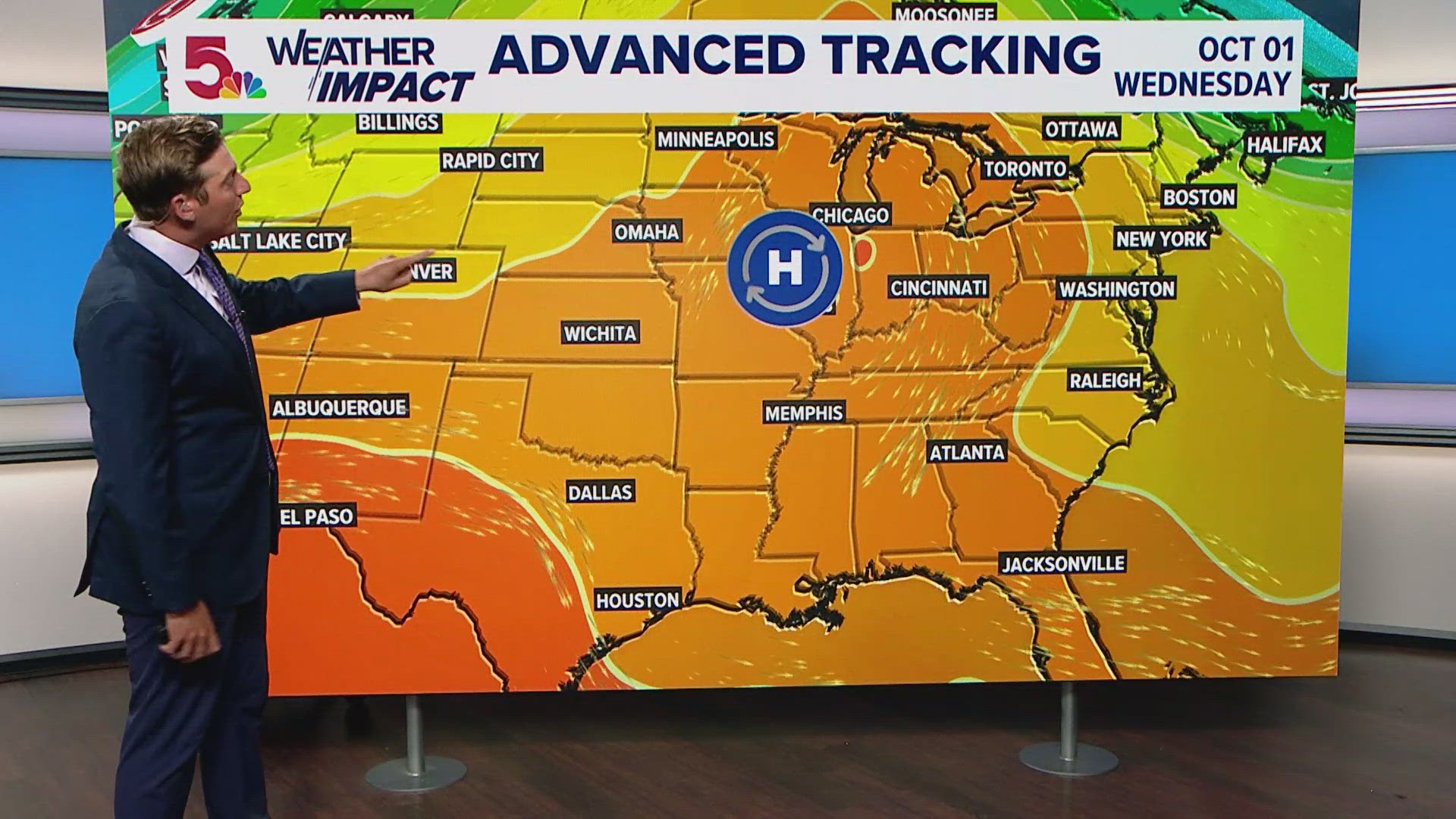Report on the Blackfoot Challenge Aspen Workshop: Ecological Resilience and Sustainable Development
Introduction and Workshop Overview
A workshop focusing on the ecological resilience of the aspen tree was hosted by the Blackfoot Challenge on July 20-21. The event, attended by approximately 50 representatives from the private sector and partner organizations, aimed to address the multifaceted importance of aspen within the Blackfoot Watershed. The initiative underscores a commitment to collaborative action, aligning with Sustainable Development Goal 17 (Partnerships for the Goals), by bringing together diverse stakeholders to address a shared environmental challenge.
The workshop’s agenda was driven by the recognized interconnectedness of aspen conservation with key regional priorities, including:
- Wildlife habitat management
- Strategic fire planning
- Invasive weed management
- Forest biodiversity
- Avian habitats
Aspen Ecology and its Contribution to SDG 15: Life on Land
Ecological Significance and Biodiversity
Aspen is the most widely distributed tree in North America and plays a critical role in supporting ecosystem health, directly contributing to the objectives of SDG 15 (Life on Land). Its presence enhances biodiversity in Montana’s conifer-dominated forests.
- Keystone Species: Aspen stands function as “islands in a conifer sea,” stabilizing the ecosystem and supporting a diverse population of understory plants and insects.
- Habitat Provision: They provide essential breeding and browsing habitat for key game species such as elk, deer, and grouse.
- Regeneration: Aspen stands are clonal and regenerate through root suckering, allowing a single organism to persist for centuries. The ‘Pando’ clone in Utah, for example, is estimated to be 80,000 years old.
Threats to Aspen Viability
Despite their resilience, aspen populations face significant threats that jeopardize their role in the ecosystem. Forest Service research indicates that aspen basal area in the Blackfoot Valley has decreased by 38% since 2010. Key threats include:
- Lack of Recruitment: The primary threat is the failure of new suckers to be recruited or retained. An absence of smaller, younger trees in a stand is an indicator of severe environmental pressure.
- Ungulate Browsing: Browsing by animals is a major challenge, preventing new growth from reaching a height (approximately 6-8 feet) where it can survive.
- Historical Land Use: Widespread clearing of aspen a century ago to favor timber production has had long-lasting negative impacts on forest biodiversity.
Management Strategies for Climate Action and Sustainable Ecosystems
Fire Resilience and Climate Adaptation (SDG 13)
Aspen ecosystems are integral to building resilience against the impacts of climate change, particularly wildfire, which is a core target of SDG 13 (Climate Action).
- Post-Fire Regeneration: Aspen regenerates rapidly after a fire from its extensive underground root system, quickly re-establishing habitat. A six-year study following a major wildfire in Wyoming showed that aspen areas supported a higher diversity of returning bird species than conifer areas.
- Wildfire Buffering: Healthy aspen stands can act as natural firebreaks, buffering the severity and spread of wildfires due to their higher moisture content and less flammable understory.
Integrated Management Approaches
Effective aspen management requires a holistic strategy combining scientific data with local knowledge, a principle that supports inclusive and sustainable community development under SDG 11 (Sustainable Cities and Communities).
- Dual Approach: Management must incorporate both a top-down system using scientific monitoring and a bottom-up approach that includes place-based knowledge and cultural values.
- Site-Specific Assessment: It is critical to identify the specific limiting factors for each stand, such as browsing pressure or competition from conifers, before taking management action.
- Landowner Support: The Blackfoot Challenge provides resources to help landowners assess their aspen stands and implement wise management practices, emphasizing that protecting individual stands contributes to larger regional conservation goals.
The Role of Beaver Ecosystems in Advancing SDGs 6, 13, and 15
Synergies with Beaver for Water, Climate, and Life on Land
The workshop highlighted the profound symbiotic relationship between aspen and beaver, whose activities directly advance multiple Sustainable Development Goals, including SDG 6 (Clean Water and Sanitation), SDG 13 (Climate Action), and SDG 15 (Life on Land).
Beaver-Driven Ecosystem Engineering
- Habitat Creation: Beavers create ideal conditions for aspen to thrive. Their dam-building activities result in sub-irrigated areas with wet soils and robust riparian vegetation.
- Water Management (SDG 6): Beaver-modified systems act as “giant sponges on the landscape.” They moderate drought by slowing snowmelt and storing water, and they dissipate flood energy by enhancing floodplain connectivity.
- Fire Resilience (SDG 13): The wet, green landscapes created by beavers are highly resistant to fire.
- Biodiversity Enhancement (SDG 15): Beaver habitats support a wide array of mammal, bird, and amphibian species. Furthermore, beaver activity can facilitate the expansion of aspen stands.
- Untapped Potential: Montana currently has approximately 35,000 beaver dams, which represents only 3% of the estimated potential capacity of 1.2 million dams in suitable habitats, indicating a significant opportunity for large-scale ecological restoration.
SDGs Addressed in the Article
- SDG 6: Clean Water and Sanitation – The article discusses the role of beavers in creating dams that moderate drought, slow snowmelt, and improve water storage in valley bottoms.
- SDG 13: Climate Action – The article highlights the resilience of aspen stands to wildfires and their role in mitigating drought, which are climate-related hazards.
- SDG 15: Life on Land – The core of the article focuses on the conservation and restoration of aspen forests, their biodiversity, sustainable management, and their role as a habitat for various species.
- SDG 17: Partnerships for the Goals – The article describes a collaborative workshop hosted by the Blackfoot Challenge, involving the private sector, partner organizations, a university, and the Forest Service to share knowledge and promote aspen conservation.
Specific SDG Targets Identified
-
SDG 15: Life on Land
- Target 15.1: Ensure the conservation, restoration and sustainable use of terrestrial and inland freshwater ecosystems and their services, in particular forests. The article is centered on the conservation and restoration of aspen stands, a forest ecosystem, and discusses their ecological services like providing habitat and fire resilience.
- Target 15.2: Promote the implementation of sustainable management of all types of forests, halt deforestation, restore degraded forests. The workshop and management techniques discussed, such as addressing browsing pressure and using prescribed fire, are direct efforts to promote sustainable management and restore degraded aspen stands, which have seen a 38% decrease in basal area.
- Target 15.5: Take urgent and significant action to reduce the degradation of natural habitats, halt the loss of biodiversity. The article emphasizes that aspen stands support a “diverse population of plants and insects” and are important habitats for birds and game species. The efforts to conserve aspen are actions to halt the loss of this biodiversity.
- Target 15.9: Integrate ecosystem and biodiversity values into local planning and development processes. The Blackfoot Challenge workshop is a clear example of integrating the ecological values of aspen (biodiversity, fire resilience, water management) into local land management planning involving landowners and various organizations.
-
SDG 6: Clean Water and Sanitation
- Target 6.6: Protect and restore water-related ecosystems, including mountains, forests, wetlands, rivers. The article describes how beavers, which thrive with aspen, create dams that restore wetlands and riparian zones. These systems “slow down snowmelt and allow water to soak into valley bottoms, acting as giant sponges on the landscape,” directly contributing to the restoration of water-related ecosystems.
-
SDG 13: Climate Action
- Target 13.1: Strengthen resilience and adaptive capacity to climate-related hazards and natural disasters. The article repeatedly mentions how aspen and beaver-created habitats increase resilience to natural disasters. Aspen “buffers the severity of wildfire,” and beaver-modified systems “inhibit fire activity” and moderate drought, strengthening the ecosystem’s adaptive capacity to climate-related hazards.
-
SDG 17: Partnerships for the Goals
- Target 17.17: Encourage and promote effective public, public-private and civil society partnerships. The workshop itself is a model of this target, bringing together the Blackfoot Challenge (a civil society organization), “the private sector as well as partner organizations,” the University of Montana (public), and the Forest Service (public) to address aspen conservation.
Implied or Mentioned Indicators
-
SDG 15: Life on Land
- Indicator for Target 15.2: The article mentions a specific measurement used by the Forest Service: “aspen basal area has decreased by 38%.” Basal area, a measure of tree trunk diameter, is used as a direct indicator of aspen stand density and health, serving to measure progress in restoring these degraded forests.
- Indicator for Target 15.5: The article notes that aspen supports “more species of returning birds than conifer areas” after a fire and provides habitat for “game species such as elk, deer and grouse.” Monitoring the population and diversity of these species within aspen stands can serve as an indicator of habitat health and biodiversity.
-
SDG 6: Clean Water and Sanitation
- Indicator for Target 6.6: The article provides a quantifiable measure of the extent of water-related ecosystems created by beavers. It states that there are “about 35,000 dams in Montana” with a potential for “1.2 million dams.” The number of beaver dams is a direct indicator of the restoration of these specific wetland ecosystems.
-
SDG 13: Climate Action
- Indicator for Target 13.1: The article implies an indicator by stating that aspen habitats have “wet soils, robust riparian vegetation and lots of surface water which inhibits fire activity.” Measuring the severity and extent of wildfires in areas with healthy aspen stands versus those without could serve as an indicator of resilience to this climate-related hazard.
-
SDG 17: Partnerships for the Goals
- Indicator for Target 17.17: The article provides a metric for partnership engagement by stating, “About 50 people representing the private sector as well as partner organizations attended” the workshop. The number of participants and the diversity of represented organizations (private, public, civil society) can be used as an indicator of partnership effectiveness.
Summary of Findings
| SDGs | Targets | Indicators |
|---|---|---|
| SDG 15: Life on Land |
15.1: Conserve and restore terrestrial and inland freshwater ecosystems. 15.2: Promote sustainable management of forests and restore degraded forests. 15.5: Halt biodiversity loss and reduce degradation of natural habitats. 15.9: Integrate ecosystem and biodiversity values into local planning. |
– Change in aspen basal area (mentioned as a 38% decrease). – Population and diversity of key species (birds, elk, deer, grouse) in aspen habitats. |
| SDG 6: Clean Water and Sanitation | 6.6: Protect and restore water-related ecosystems. | – Number of beaver dams (currently 35,000 out of a potential 1.2 million in Montana). |
| SDG 13: Climate Action | 13.1: Strengthen resilience and adaptive capacity to climate-related hazards. | – Reduced severity and extent of wildfires in areas with healthy aspen stands and beaver activity. |
| SDG 17: Partnerships for the Goals | 17.17: Encourage and promote effective public, public-private and civil society partnerships. | – Number of participants (50) and diversity of organizations (private, public, university, civil society) involved in conservation workshops. |
Source: seeleylake.com







